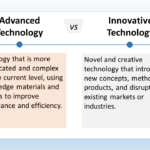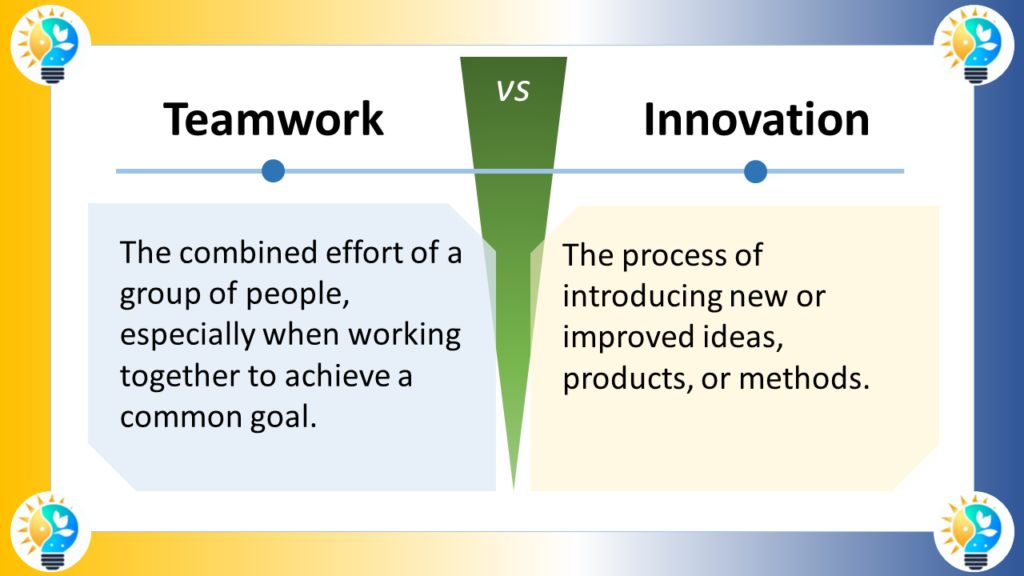While both advanced and innovative technologies aim to push boundaries, advanced technology typically focuses on refining existing systems, whereas innovative technology seeks to introduce entirely new concepts or products to the market.

In the fast-paced world of technological development, the terms Innovative Technology and Advanced Technology are frequently used to describe the cutting edge of human ingenuity and engineering. While they may seem similar at a glance, these terms have distinct meanings and implications for industries, consumers, and the progress of technology as a whole.
Definitions
Understanding Innovative Technology
Innovative Technology refers to novel tools, devices, systems, or methods that bring about significant changes or improvements to the status quo. Innovation is not just about creating something entirely new; it can also involve applying existing technology in ways that are original and transformative.
Characteristics of Innovative Technology
- Novelty: The technology introduces new concepts or approaches.
- Disruption: It has the potential to disrupt existing markets or behaviors.
- Improvement: Offers improvements in efficiency, cost, or user experience.
- Adoption: Requires a period of adoption as users adjust to the new system.
Understanding Advanced Technology
In contrast, Advanced Technology usually describes the most modern or sophisticated level of technology available. It is characterized by its superiority over previous iterations or competing technologies in terms of performance, functionality, and capabilities.
Characteristics of Advanced Technology
- Sophistication: Incorporates complex features and high-level engineering.
- Performance: Delivers superior performance compared to standard technology.
- Progression: Represents the latest step in technological progress.
- Specialization: Often requires specialized knowledge or skills to develop and use.
Exploring a Variety of Synonyms for Innovative Technology
- Advanced Technology
- Cutting-Edge Innovations
- Cutting-Edge Breakthroughs
- Disruptive Tech
- Emerging Technologies
- Forward-Looking Tech
- Futuristic Innovations
- Groundbreaking Developments
- High-Tech Breakthroughs
- Innovative Breakthroughs
- Inventive Solutions
- Leading-Edge Advancements
- Modern Technological Breakthroughs
- Progressive Advancements
- Next-Generation Technology
- Novel Tech
- Revolutionary Tech
- State-of-the-Art Solutions
- State-of-the-Art Innovations
- Trailblazing Innovations
- Visionary Tech

Innovation is considered as a driving force in progress.
It includes the introduction of novel ideas, methods, or products that bring positive change and advancement.
For more information about innovations, check our glossary
The Relationship and Relevance Between the Two
Innovative and advanced technologies are intimately related, as innovation often drives the advancement of technology. An innovative product can redefine expectations and set a new baseline for what is considered advanced. Conversely, the continuous pursuit of advancement can create fertile ground for innovation.
However, not all innovative technology is advanced, and not all advanced technology is necessarily innovative. Innovation can occur with simple, accessible technology that changes the way we approach problems or tasks. Meanwhile, advanced technology may represent an incremental improvement that, while sophisticated, doesn’t necessarily change the game.
Contextual Application of the Terms
In industry and academia, these terms are used to guide research, development, and investment. For example, a company may invest in advanced technology to maintain a competitive edge, ensuring that their production processes or products are at the forefront of current capabilities. Alternatively, they may seek out innovative technology to disrupt the market or create a new niche, potentially gaining a first-mover advantage.
Examples of Utilization
An example of innovative technology could be the blockchain. When it was first introduced, it was not the most advanced form of database or network technology. However, it was innovative in its approach to decentralization and security, potentially disrupting numerous industries.
In contrast, quantum computing represents advanced technology. Current quantum computers are at the cutting edge of computational science, offering potentially unparalleled processing power that could transform fields like cryptography and materials science.
Comparisons
The difference between innovative technology and advanced technology lies in their characteristics and applications. Here is a breakdown of the distinctions:
Innovative Technology:
- Definition: Innovative technology refers to the development and implementation of new and creative solutions to address existing problems or meet emerging needs [1].
- Characteristics:
a. Novelty: Innovative technology introduces new ideas, concepts, or approaches that have not been widely used before.
b. Creativity: It involves thinking outside the box and finding unique solutions to challenges.
c. Human-centered: Innovative technology focuses on improving user experiences and addressing specific user needs.
d. Iterative: It involves an ongoing process of experimentation, testing, and refinement to continuously improve the technology [1]. - Application: Innovative technology can be applied across various fields and industries, including healthcare, education, transportation, and communication. It aims to bring about positive change and improve efficiency, effectiveness, and user satisfaction [1].
Advanced Technology:
- Definition: Advanced technology refers to the use of cutting-edge or highly developed tools, techniques, or systems that represent the latest advancements in a particular field [2].
- Characteristics:
a. Sophistication: Advanced technology is characterized by its high level of complexity, precision, and capability.
b. Specialization: It often requires specialized knowledge, skills, and resources for development, implementation, and maintenance.
c. Efficiency: Advanced technology is designed to perform tasks more efficiently, accurately, and rapidly than previous technologies.
d. Research-driven: It is often the result of extensive research, development, and innovation in scientific and technological fields [2]. - Application: Advanced technology can be found in various sectors, such as aerospace, robotics, artificial intelligence, nanotechnology, and renewable energy. It pushes the boundaries of what is currently possible and drives progress in scientific and technological advancements [2].
In summary, innovative technology focuses on introducing new and creative solutions to address problems and meet needs, while advanced technology represents the latest cutting-edge tools and techniques in a specific field. While innovative technology emphasizes creativity and user-centeredness, advanced technology emphasizes sophistication and efficiency.
FAQ
Q: Can advanced technology become innovative technology?
A: Yes, if its application leads to a novel and disruptive change in how tasks or problems are approached, it can be considered innovative.
Q: Is all new technology automatically considered advanced?
A: Not necessarily. New technology is often more advanced than what came before, but it only becomes “advanced technology” if it represents the latest and most sophisticated option available.
Q: How can businesses decide whether to invest in innovative or advanced technology?
A: Businesses must consider their strategic goals, market position, and resources. Investment in innovative technology might be aimed at creating new markets or disrupting existing ones, while advanced technology investments might focus on improving performance and productivity within existing markets.
Q: Do innovative technologies always succeed in the market?
A: No, success is not guaranteed. Innovative technologies often require market acceptance, which can be influenced by factors like usability, cost, and the presence of established competitors.
Q: Can technology be both innovative and advanced?
A: Absolutely. Some technologies represent both a significant departure from existing methods and the highest level of sophistication currently available. When this occurs, the technology can be considered both innovative and advanced.


